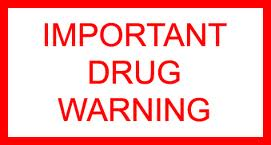Oakland Office Wins Summary Adjudication on Failure to Warn Claims About Benzene on Preemption Grounds
By James Scadden, Oakland on April 21, 2014
Gordon & Rees client Radiator Specialty Co. won summary adjudication extinguishing any failure to warn claims, on the ground that the product containers had warning labels in compliance with Federal Hazardous Substances Act (FHSA) labeling requirements.
Radiator’s national counsel Jim Riley and Stacy Yates of Coats Rose in Houston led the charge, capitalizing on similar successes they have obtained in other jurisdictions. The case is venued in Alameda County, and Jeff Coons of the brand-new Oakland office of Gordon & Rees provided the local expertise so the client could obtain what we understand to be the first ruling of its kind in California.
In Johnson v. Armored Autogroup, Inc., plaintiff claims to have developed leukemia from occupational exposure to benzene from various products, including Radiator Specialty’s Liquid Wrench, while working as an auto mechanic in the 1960s and 1970s. Radiator moved for summary judgment arguing that the FHSA preempted plaintiffs’ failure to warn and design defect claims, and that Radiator’s labels complied with the FHSA.
Riley argued the motion in front of Alameda Superior Court Judge Wynne Carvill on March 21, 2014, and the court issued its ruling on March 27, 2014, granting summary adjudication on plaintiffs’ failure to warn claims. Judge Carvill allowed, however, plaintiffs’ design defect cause of action to go forward.
Riley, Yates and Gordon & Rees’s Oakland office continue to defend the matter and hope to report further successes soon as plaintiffs potentially most appealing causes of action have now been dismissed.

 Often the physician, a trained clinician, will testify that she was familiar with the risks in question and did not need to be provided a warning. Alternatively, the physician may testify that a stronger warning would not have influenced her decision to prescribe the drug and that she still prescribes the drug, although the problem with this, is that some drugs are known for causing addiction sometimes, so the use of an
Often the physician, a trained clinician, will testify that she was familiar with the risks in question and did not need to be provided a warning. Alternatively, the physician may testify that a stronger warning would not have influenced her decision to prescribe the drug and that she still prescribes the drug, although the problem with this, is that some drugs are known for causing addiction sometimes, so the use of an  to every warning claim – the defect (whatever is allegedly wrong with the warning) has to cause the injury. If the prescribing physician never even read the purportedly inadequate warning, none of those inadequacies could have affected his/her treatment of the patient.”
to every warning claim – the defect (whatever is allegedly wrong with the warning) has to cause the injury. If the prescribing physician never even read the purportedly inadequate warning, none of those inadequacies could have affected his/her treatment of the patient.”
 In determining that Dow was entitled to the statutory presumption, the court held that Dursban TC’s compliance with both FIFRA and Indiana law had a significant impact under IPLA’s consumer expectation-based product liability regime because the risk of harm had been evaluated by agencies with the duty of monitoring the effects of Dursban TC. Furthermore, Dursban TC’s labeling and warnings had been approved by experts.
In determining that Dow was entitled to the statutory presumption, the court held that Dursban TC’s compliance with both FIFRA and Indiana law had a significant impact under IPLA’s consumer expectation-based product liability regime because the risk of harm had been evaluated by agencies with the duty of monitoring the effects of Dursban TC. Furthermore, Dursban TC’s labeling and warnings had been approved by experts. In many jurisdictions, a product liability plaintiff is not permitted to testify concerning what he or she would have done had there been an adequate warning on a product; such testimony is considered both self-serving and speculative. In the absence of such testimony, some states have adopted the Heeding Presumption.
In many jurisdictions, a product liability plaintiff is not permitted to testify concerning what he or she would have done had there been an adequate warning on a product; such testimony is considered both self-serving and speculative. In the absence of such testimony, some states have adopted the Heeding Presumption. Michael Hoenig’s Product Liability column in The New York Law Journal, “
Michael Hoenig’s Product Liability column in The New York Law Journal, “